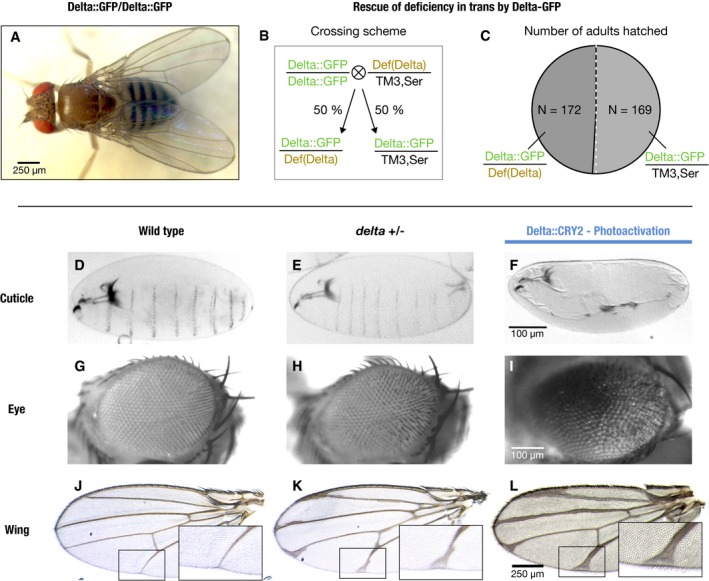Benchmarking of light‐induced loss‐of‐function phenotypes in Delta::CRY2 flies. Delta::CRY2 flies reared in the light exhibit more severe Delta loss‐of‐function phenotypes compared to Delta heterozygotes. This is evident from the loss of denticle belt patterning in the embryonic cuticle (F), disorganization of the ommatidia (I) and thickening of the wing veins (L) when compared to the Delta heterozygous counterparts where the denticle belt patterning is unaffected (E), and the ommatidia (H) and wing venation (K) phenotypes are milder. Note, panels (F, I, L) are the same as in Fig
1. Corresponding wild‐type cuticle, eye and wing are depicted in panels (D), (G) and (J), respectively. Scale bars, 100 μm in (F) and (I), and 250 μm in (L).

